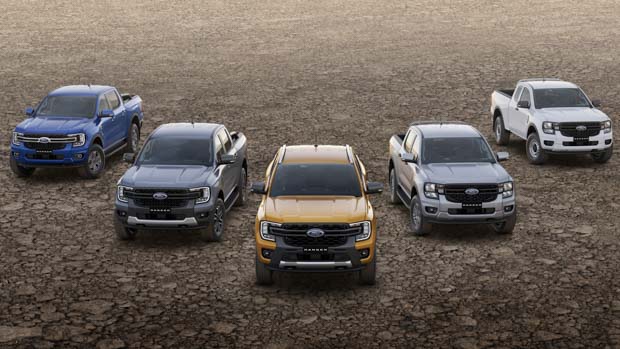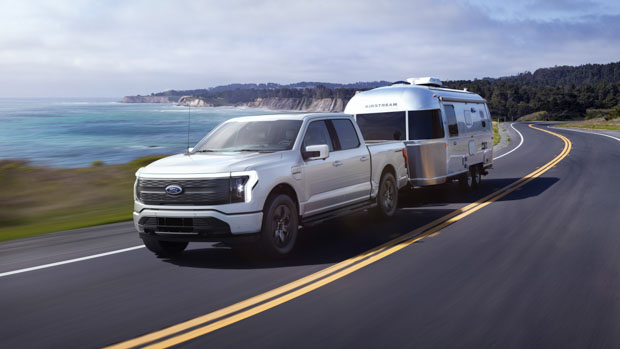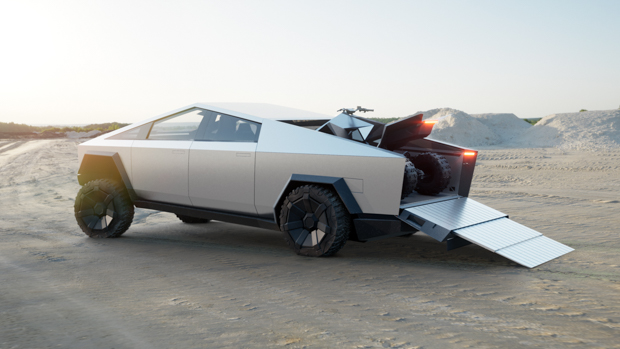-
Car Reviews
- All reviews
- Midsize SUVs
- Small cars
- Utes
- Small SUVs
- Large SUVs
- Large cars
- Sports SUVs
- Sports cars
- Vans
Latest reviews
- Car News
-
Car Comparisons
Latest comparisons
- Chasing Deals
A plug-in hybrid Amarok is unlikely as one Volkswagen insider said it had “unsatisfactory” electric range
Final decisions about an all-electric powertrain are currently being made for the second-generation Volkswagen Amarok, with the diesel-powered ute set to be released in Australia in early 2023.
According to Autocar, the related Ford Ranger will be sold with a petrol-electric plug-in hybrid drivetrain in future, but the Amarok will not gain this same setup.
Instead, insiders at Volkswagen have told the UK publication that the electric-only range of the plug-in hybrid was “unsatisfactory”. Volkswagen will continue to develop an electric-only Amarok for a release sometime in 2025.
Given the high degree of shared componentry between the vehicles, it’s likely that the intense, expensive development of a fully-electric Amarok would also result in a battery-electric Ford Ranger being offered in select markets – including Australia.
It’ll be a smaller and potentially more efficient competitor to other large utes such as the Rivian R1T and Ford F-150 Lightning pickup truck.
Lars Krause, the commercial vehicle board member for Volkswagen, spoke to Autocar during the general unveiling of the ute in Germany.
“We’re looking at a pure-electric version,” he said. “It’s still early, but it’s something we’re considering within the life cycle.”
As discussed above, Volkswagen chose not to offer a plug-in hybrid version of the Amarok in 2023 as will be done with the closely-related Ford Ranger due to concerns around electric driving range.
“Right now, we are not satisfied with the electric range of the plug-in hybrid,” Krause added.
Although unconfirmed, the Volkswagen Amarok electric could use the batteries and electric motors from its joint partnership with Ford.
The technology could make its way from the upcoming Ford F-150 Lightning. In standard range guise, the Lightning uses a dual motor setup (one mounted on each axle) to produce 318kW/1051Nm but can be boosted to up to 420kW for an extended range version.
While the higher output would be impressive for the Amarok, power and torque will likely be toned down for the Volkswagen dual-cab model. Expect figures somewhere around the vicinity of 300kW/750Nm.
As the Amarok is not a dedicated electric ute such as those produced by Rivian and Tesla, higher outputs would be much harder to manage in a smaller package that also has to prioritise internal combustion engines.
Range for the Amarok could be around 400-500km depending on the size of the battery. The Lightning uses a large 131kWh battery pack but for a smaller model like the Amarok, this could shrink to around 90-100kWh.
It is still obviously very early days for the Amarok electric dual-cab ute, but it could also have electric technology found in other ID electric products going on sale in the coming years.
Although the Amarok ute won’t be built on the same MEB platform as the rest of the ID range, it could utilise similar battery technology.
Despite not sitting on the wider MEB platform, Volkswagen has said that it’s confident that battery technology will fit within the new chassis of the Amarok ute that uses a box steel structure.
Time will tell what happens with the new Amarok and what powertrains are offered. As its rough release timing isn’t until 2025, there is still plenty of time for development to take place.
Latest news
About Chasing cars
Chasing Cars reviews are 100% independent.
Because we are powered by Budget Direct Insurance, we don’t receive advertising or sales revenue from car manufacturers.
We’re truly independent – giving you Australia’s best car reviews.




